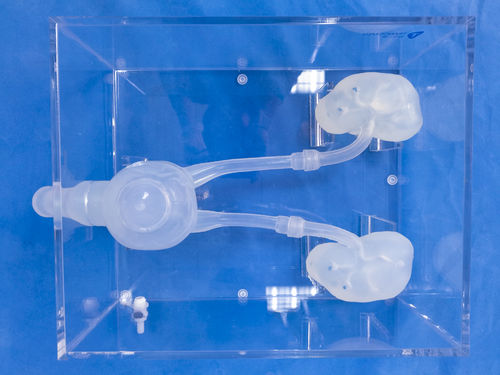
#Industry News
Prostatic Hyperplasia Stent Expansion Procedure: A Minimally Invasive Approach for Benign Prostatic Hyperplasia
Ureteroscopy Simulator I
Introduction:
Prostatic hyperplasia, also known as benign prostatic hyperplasia (BPH), is a common condition among aging men that involves the enlargement of the prostate gland. This enlargement can cause bothersome urinary symptoms, such as frequent urination, weak urine flow, and incomplete bladder emptying. To address these symptoms, medical advancements have led to the development of various treatment options, including the Prostatic Hyperplasia Stent Expansion Procedure. This minimally invasive approach offers a promising solution for managing BPH, providing relief to affected individuals.
Understanding Benign Prostatic Hyperplasia:
Benign prostatic hyperplasia refers to the non-cancerous enlargement of the prostate gland, which surrounds the urethra, the tube responsible for transporting urine from the bladder out of the body. As the prostate gland grows, it can exert pressure on the urethra, leading to urinary symptoms. BPH is a common condition, particularly among older men, and its prevalence increases with age.
Benefits and Considerations:
The Prostatic Hyperplasia Stent Expansion Procedure offers several advantages over traditional surgical interventions for BPH, such as transurethral resection of the prostate (TURP). Some key benefits include:
1.Minimally Invasive: The procedure is less invasive than traditional surgical approaches, resulting in reduced trauma, minimal scarring, and potentially faster recovery times.
2.Improved Urinary Symptoms: The stent expansion effectively alleviates urinary symptoms caused by prostate enlargement, leading to improved urinary flow and reduced frequency of urination.
3.Outpatient Procedure: In many cases, the stent expansion procedure can be performed on an outpatient basis, allowing patients to return home on the same day.
It is important to note that the Prostatic Hyperplasia Stent Expansion Procedure may not be suitable for all individuals. Factors such as prostate size, patient anatomy, and the presence of other medical conditions may influence the treatment approach. A thorough evaluation and consultation with a healthcare professional are crucial in determining the most appropriate treatment option for each patient.





